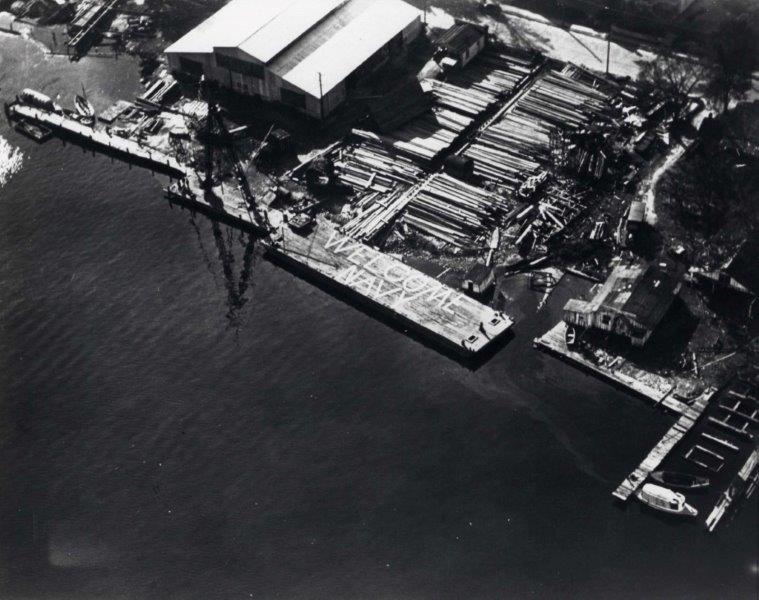The Missouri
Hatteras Island to Elizabeth City




Listen
L.P. O'Neal talks about his parents' seafaring careers, the Missouri, the Duncan, and a waterfowl hunting club .
Read
“Cape Hatteras Gets Its Pantry Supplies: Five Schooners Leave Here This Week With 150 Tons of Supplies For the Banks,” proclaimed a headline in The Independent, Elizabeth City’s newspaper, on June 9, 1922.
The Cape Hatteras schooners docked at the commercial wharves in Elizabeth City were the Cathleen, the Virginia Dare, the E.H. Brown, the Missouri, and the Julia W. Bell.
“One schooner had loaded with lumber at the foot of Main St. Another was tied just back of a wholesale dry goods house. A third one back of Elizabeth City’s largest wholesale grocery was being filled to its hatch coamings with tins of Baltimore lard, bags of Missouri meal and Kansas wheat, canned tomatoes from California, sugar and molasses from Louisiana, sardines from Maine, hams from Chicago, petroleum from Texas, in fact, with every variety of packed supplies that represent the products of nearly every state in the Union,” the newspaper reported.
At the time the article was written, Bate O’Neal of Avon was captain of the Missouri.
Loran Pierce O’Neal of Avon started running the 56-foot, shallow-draft sharpie from Avon to Elizabeth City in 1927. He also sailed the Duncan, a bugeye schooner built on the Chesapeake Bay in 1886.
“We would leave in the morning just when it was becoming light. If you were lucky you would make it to Elizabeth City by dark. We had to fill different orders from the stores. If we needed an order for lumber, we would go to the mill. We had to load the freight down in the hull of the boat,” recalled Loran O’Neal’s nephew, Roy Gray, who worked on the boat when he was a young teenager.
The boat was built in Smyrna in 1901.
“The Missouri only drew three feet of water when fully loaded. These boats were workboats, not speed boats, and probably only ran five to seven knots with a good wind,” Loran O’Neal’s son, L.P., said.
It wasn’t until 1939 that O’Neal put a motor in the vessel.
The Missouri made her last run in the early 1940s before O’Neal was called back into the navy. The vessel broke loose from its anchor chain during the 1944 hurricane, was swept across the island to the ocean, and broke in half.
The freight boats serving Hatteras Island also carried passengers.
Learn More
Crockett, Greg, Talmade Willis, Paula Cox, and Lisa Whitley. “Transporting Goods To The Island: Mr. Roy Gray tells about when bringing goods to the island was not so easy.” Sea Chest vol. 1 new series number 2 (1981).
West, Susan. “Avon craftsman is building the past.” Outer Banks Sentinel, 30 March 2005.
Dixie Burrus Browning traveled to and from her home in Hatteras village on freight boats when she was a young girl in the 1940s and recalled a particularly rough trip leaving Elizabeth City in a 2008 interview.
“So when it started getting kind of rough — and, as I said, there were absolutely no amenities — they sent us below. We opened the hatch up in the forepeak, and climbed down a ladder, and sat on upturned cases or crates or whatever. And by then the water was sloshing about mid-way up our shins and we just sat there. And the bow was rocking back and forth. And we were getting sick. And every time the boat would go like this, with all that freight piled up behind us, the boards would creak and groan. And like I said, it was an eight-hour trip. In pitch darkness,” she said.
Browning’s grandfather, Ethelbert Dozier Burrus, captained the Hamlet. In 1913, he transported ten live bottle-nosed dolphins captured off Hatteras up Pamlico Sound and through the Great Dismal Swamp Canal to Norfolk, Virginia on the first leg of their journey to the New York Aquarium for exhibition.



